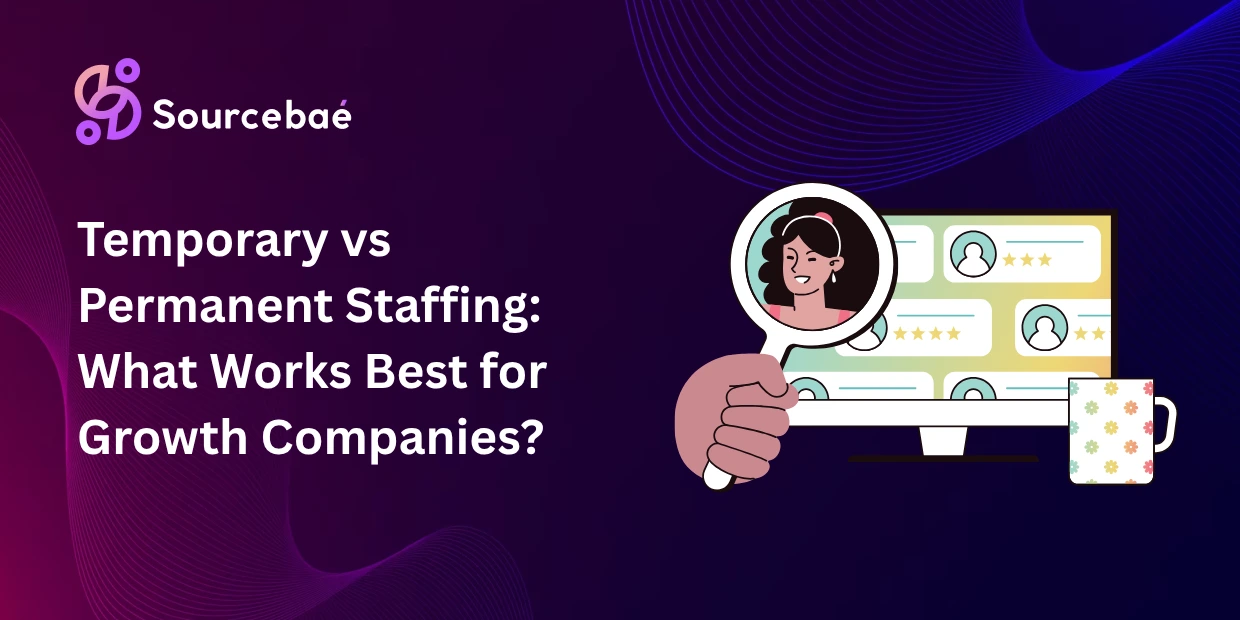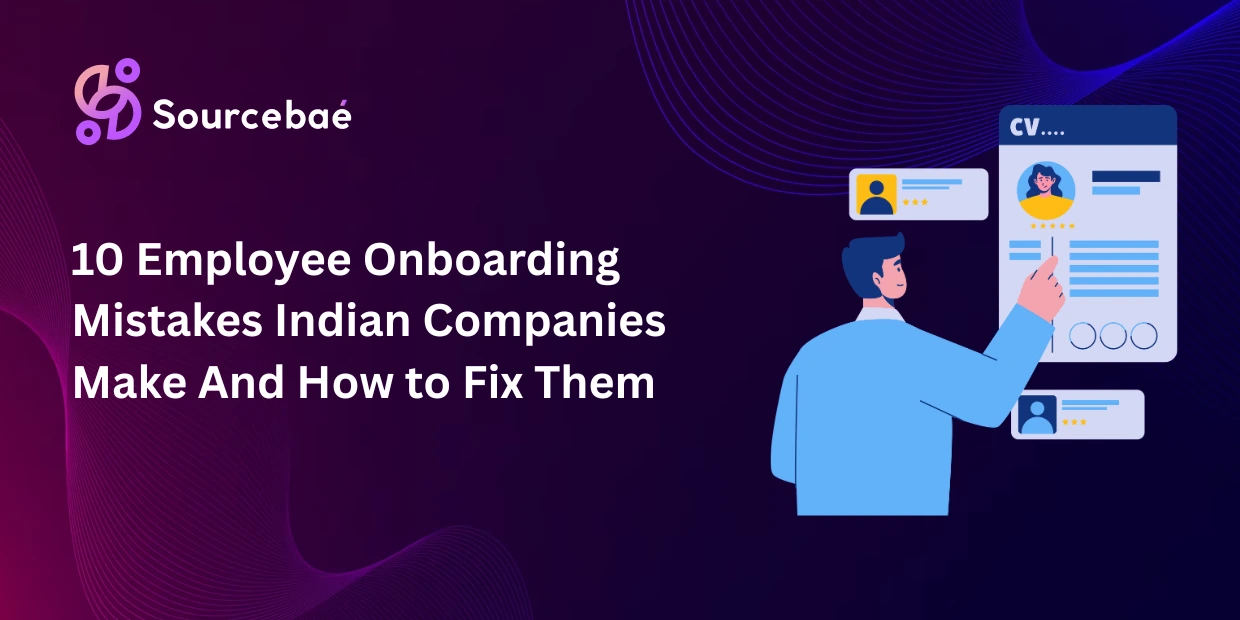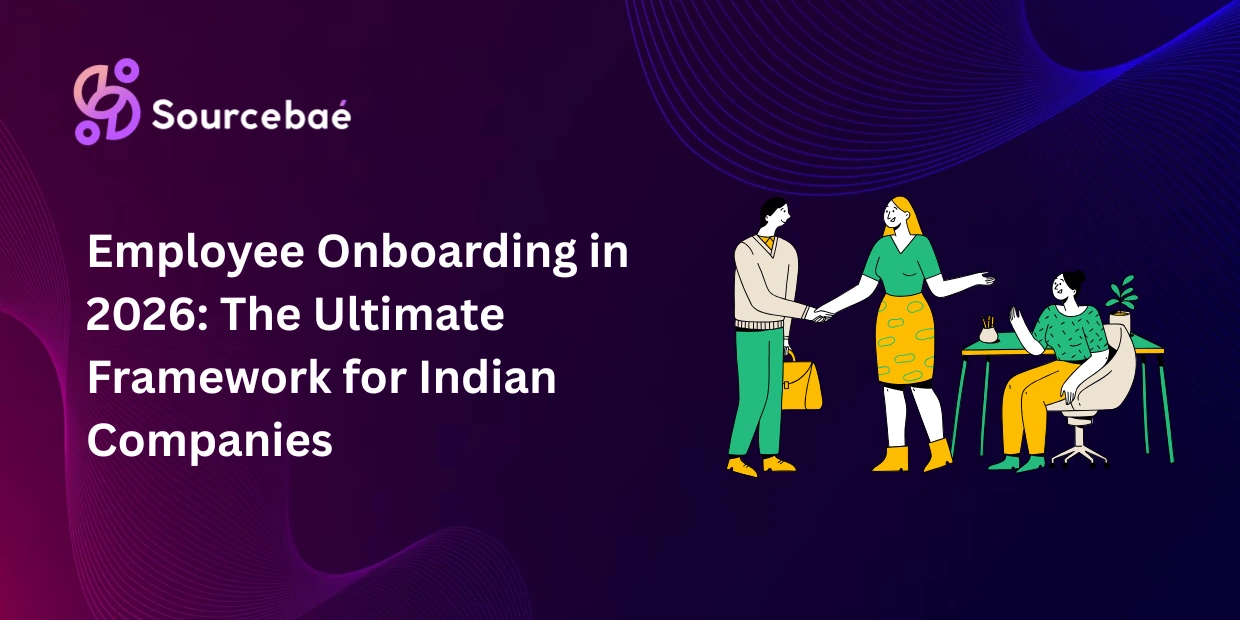Making staffing decisions is one of the most critical challenges impacting growing companies. Picking the right staffing method isn’t simply about filling vacant positions; it influences overall productivity, growth potential, corporate culture, and long-term success. For growth-oriented organizations, the choice between temporary vs permanent staffing demands careful consideration, strategic alignment, and a clear understanding of the pros and cons of each option.
In this comprehensive guide, we’ll explore temporary staffing and permanent staffing concepts. We’ll discuss their definitions, advantages, disadvantages, and key factors to consider. Additionally, we’ll explain when to adopt each method or combine both to propel your business forward.
Understanding Temporary Staffing
Definition and Characteristics
Temporary staffing refers to hiring individuals on a short-term contractual basis. This staffing arrangement helps organizations meet short-term work demands, seasonal spikes, special projects, or sudden workload surges without long-term employment commitment.
Temporary workers—often known as temps—can be sourced through staffing agencies specializing in managing short-term manpower solutions. Temporary placements typically last from a few weeks to several months and are often scheduled around specific projects or timelines.
Common Scenarios in Growth Companies Where Temporary Staffing Works Best:
- Rapid business scaling or unexpected growth spurts
- Seasonal fluctuations (holiday peaks, summer demand, tax preparation season)
- Covering employee absences (maternity leave, long-term illnesses)
- Testing employees’ suitability for long-term positions without initial commitments
Pros of Temporary Staffing:
Flexibility in Staffing Levels
Temporary staffing offers incredible agility, enabling companies to scale staffing levels rapidly up and down according to demand, reducing the risk of overstaffing or understaffing.
Reduced Overhead Costs
Companies save significantly by reducing recruitment expenses, benefits, training overhead, and payroll taxes since most temporary workers remain agency employees.
Quick Hiring Process
Hiring temporary staff is considerably more efficient, allowing businesses to fill positions as quickly as within days, compared to traditional lengthy hiring processes.
Potential to Trial Employees
Temps can serve as risk-free candidates, allowing employers to evaluate job performance, work ethic, and cultural fit before committing permanently.
Effective Management of Workload Variability
Hiring temporary workers alleviates stress and boosts productivity during peak times, ensuring permanent staff isn’t consistently overburdened.
Cons of Temporary Staffing:
Reduced Employee Loyalty and Engagement
Temps might not feel long-term commitment, resulting in less loyalty and lower engagement levels compared to permanent employees.
Potential Quality Variability
Temporary employees may have varied standards or skill levels, necessitating more supervision or training.
Limited Continuity Due to High Turnover
Frequent staff turnover can impede long-term efficiency, continuity, and growth.
Intellectual Property & Confidentiality Risks
Temps unfamiliar with detailed company procedures may inadvertently pose confidentiality hazards or risks to proprietary knowledge.
Understanding Permanent Staffing
Definition and Characteristics
Unlike temporary staffing, permanent staffing involves long-term employment commitments where employees are hired directly by the company. These individuals take permanent positions within the organization, frequently involving roles critical for strategic growth and sustainability.
Typical Roles Suited for Permanent Staffing:
- Core management and leadership roles
- Long-term specialists (IT, finance, R&D)
- Key sales, marketing, and business development personnel
Pros of Permanent Staffing:
Long-Term Stability and Continuity
Permanent employees add substantial value through job stability, consistent work quality, and continuity in institutional knowledge and processes.
Stronger Employee Loyalty and Engagement
Permanent staff tend to become invested in the company’s vision, exhibiting stronger employee advocacy, higher engagement, and brand loyalty.
Alignment With Company Culture and Values
Permanent staff often integrate deeply into corporate culture, ethics, and long-term business objectives.
Quality of Skills and Knowledge Retention
Permanent workforce fosters skills development and knowledge accumulation, providing tangible competitive advantages.
Cons of Permanent Staffing:
Higher Long-Term Costs
Permanent employees demand ongoing salaries, payroll taxes, rigorous onboarding processes, ongoing training investments, retirement plans, health insurance, and other expensive benefits.
Reduced Flexibility to Adapt Quickly
Perm-staffing decisions significantly reduce agility, limiting responses to workload fluctuations or rapidly changing business environments.
Complexity and Slowness in Hiring Process
Attracting, screening, negotiating, onboarding, and training permanent hires can be lengthy, resource-dense tasks bogging down your HR and recruitment teams.
Challenges During Rapid Market Changes
Lack of staffing agility may cause costly overstaffing or productivity loss when business projections shift suddenly or unexpectedly downward.
Factors to Consider When Choosing Between Temporary and Permanent Staffing
Business Objectives and Growth Forecast
Start by aligning your staffing decisions directly to your strategic vision. Clear forecasts and measurable objectives should dictate the ideal staffing path, whether temporary or permanent.
Workload Patterns
Consider business seasonality, long-term workloads, production cycles, and anticipated demand surges when making staffing plans.
Budget and Cost Analysis
Determine total staffing budget, ensuring ROI that makes sense long-term. Temporary arrangements typically reduce costs upfront, while permanent hires balance higher immediate investments against prolonged value generated.
Corporate Culture and Employee Engagement
Reflect on how each staffing approach impacts culture, employee happiness, and morale—crucially important for attracting best-in-class talent and promoting internal success.
Training Investments and Skill Requirements
Permanent employees typically offer long-term skill retention while temporary staff require frequent re-skilling. Evaluate training time-commitments thoroughly.
Legal and Compliance Considerations
Familiarize yourself with employment laws, regulations, pay equity, benefits obligations, tax ramifications, and compliance requirements linked to both temporary and permanent employment scenarios.
Blended Staffing Solutions: When Both Temporary and Permanent Staff Are Necessary
Growth companies often leverage hybrid staffing solutions, merging temporary flexibility with permanent stability. Aligning short-term resource allocation to optimize costs and scalability while investing permanently in critical roles can significantly enhance organizational agility.
Real-World Examples of Blended Approaches:
- Ecommerce businesses hiring permanent roles for technology & logistics while using seasonal temps to handle peak retail seasons.
- Tech companies permanently hiring senior engineers while temporarily outsourcing special projects or website launches.
Best Practices for Integrating Temporary and Permanent Employees Effectively
To blend permanent and temporary talent, deploy clear, consistent internal frameworks that facilitate equal opportunities, strong communication, effective onboarding, and proactive culture integration.
Essential tips:
- Offer consistent management and realistic expectations for all roles.
- Clearly communicate expectations, policies, and processes.
- Ensure temporary staff feel valued through culture inclusion and support mechanisms.
- Use temporary staffing opportunities to assess permanent employment potentiality carefully.
Case Studies: Growth Companies’ Staffing Strategies in Action
- Retail Industry: A leading retailer manages seasonal spikes via temporary workers, transitioning excellent performers into permanent positions when possible, creating increased stability and minimizing talent acquisition risks.
- Technology Sector: Tech growth companies prioritize permanent hires in critical R&D roles while relying on temporary staff to complete non-essential project phases.
Final Thoughts: Determining Your Ideal Staffing Strategy
Choosing between temporary vs permanent staffing strategies should support your business goals, growth trajectory, workload patterns, budgetary constraints, culture expectations, and skill retention goals. Remember to continuously reassess staffing effectiveness, proactively modifying your approach whenever required.
FAQs: Temporary vs Permanent Staffing
What exactly is temporary staffing?
Temporary staffing involves hiring employees for short-term engagements to address fluctuating demands, project-specific needs, or seasonal workloads without long-term payroll commitments.
When is permanent staffing necessary for growth companies?
Permanent staffing is strategically ideal for leadership, specialized roles, and critical long-term business functions requiring consistency and stability.
Are temporary workers entitled to employee benefits?
Usually, temps are employees of staffing agencies that handle payroll taxes and benefits. Thus, your firm typically doesn’t provide direct benefits.
Can temporary staffing be cost-effective for SMEs?
Yes! Temporary workers save SMEs the recurring cost commitments associated with full-time hires, resulting in enhanced cost efficiency.
How can temporary workers contribute effectively to company culture?
Temporary workers integrate better when accepted, informed, and included in team meetings, treated respectfully and valued equally as team members.
Is it easy to transition a temp into a permanent role?
Definitely. Converting a temporary placement is straightforward, allowing evaluation of skills, compatibility with roles, and cultural alignment beforehand.
Which staffing model offers better ROI for growth businesses?
Permanent staffing generates good long-term ROI for strategic roles. Temporary staffing serves as efficient short-term cost control while evaluating quality hires.
Are there legal differences between temporary vs permanent employees?
Significant compliance differences exist, notably taxes, benefits, employment law protections, compensation requirements, non-disclosure agreements, and labor standards.
Conclusion
Ultimately, the staffing approach you select significantly defines your organizational culture, cost structure, agility, and growth strategies. Evaluate your business-specific requirements, reassessing consistently, and select optimal temporary, permanent, or hybrid staffing solutions that drive forward your growth effectively.






